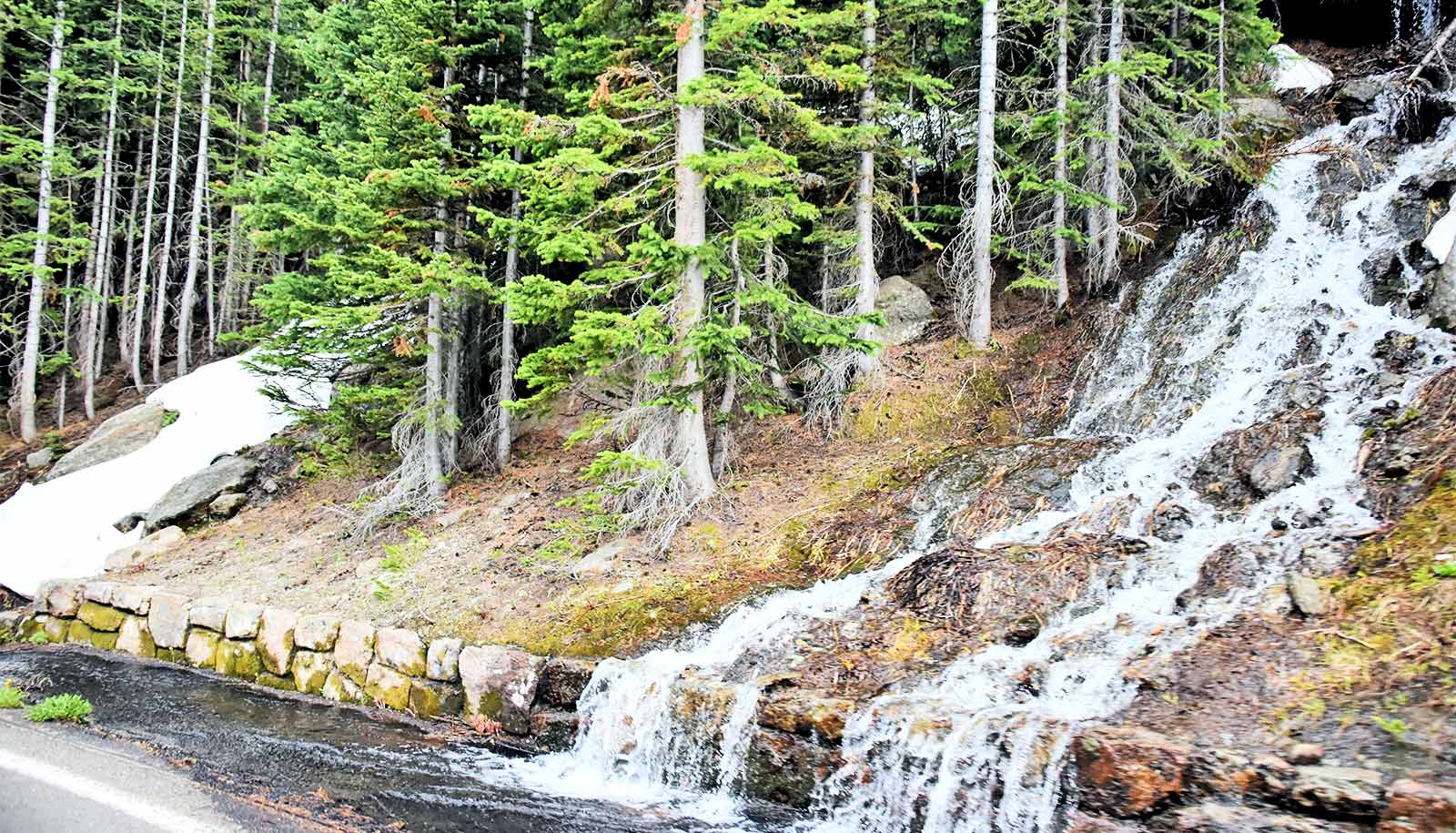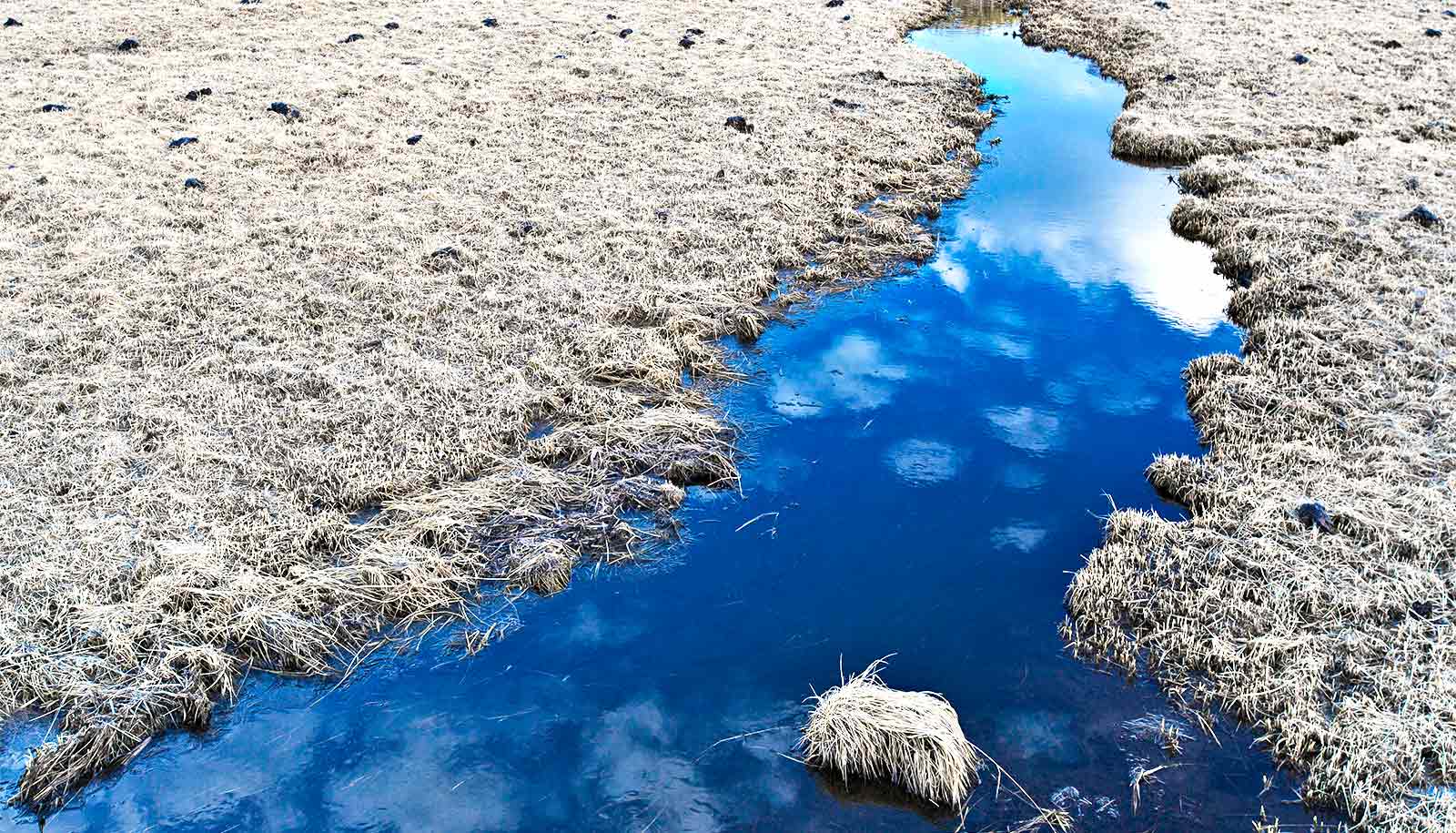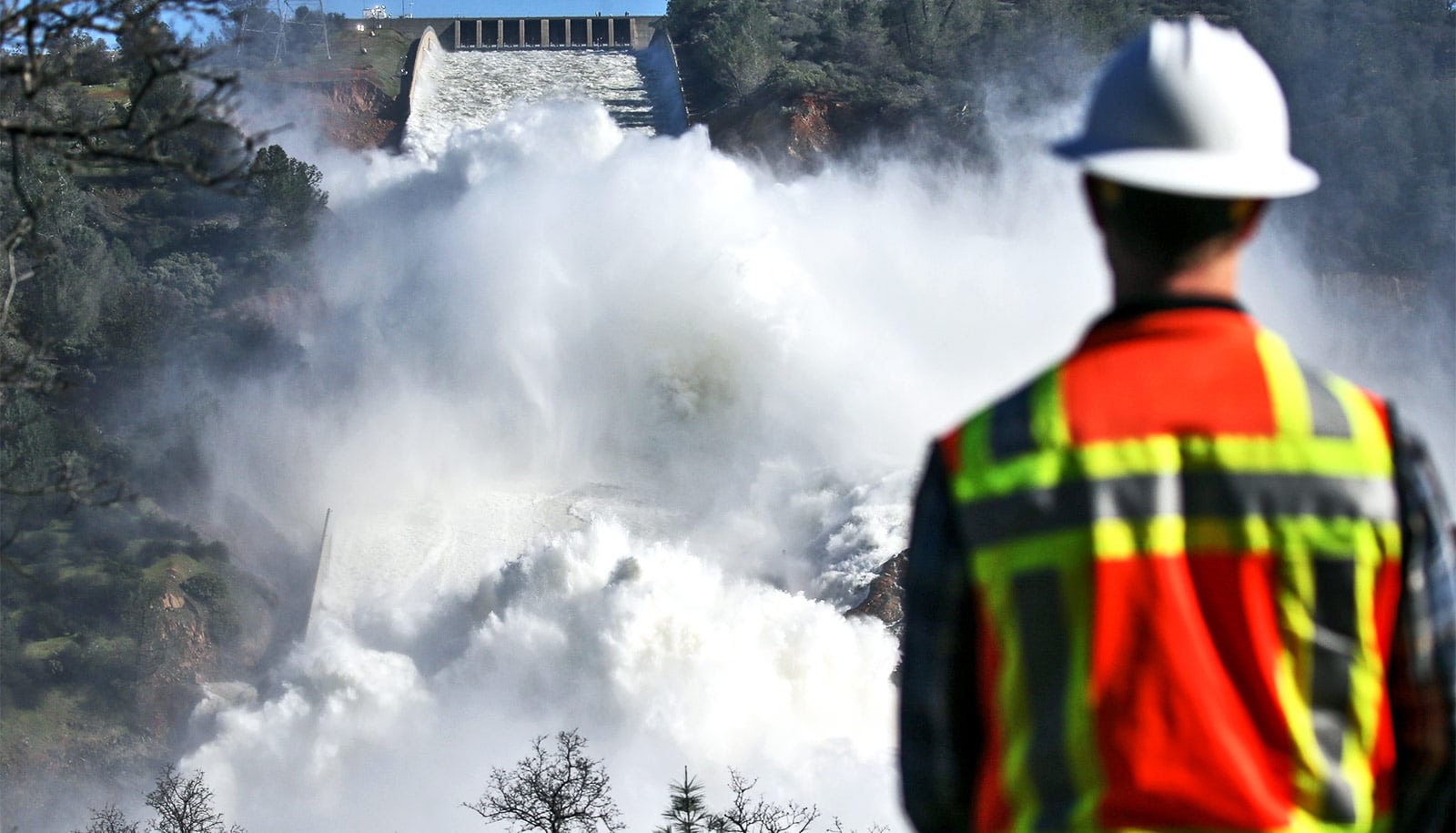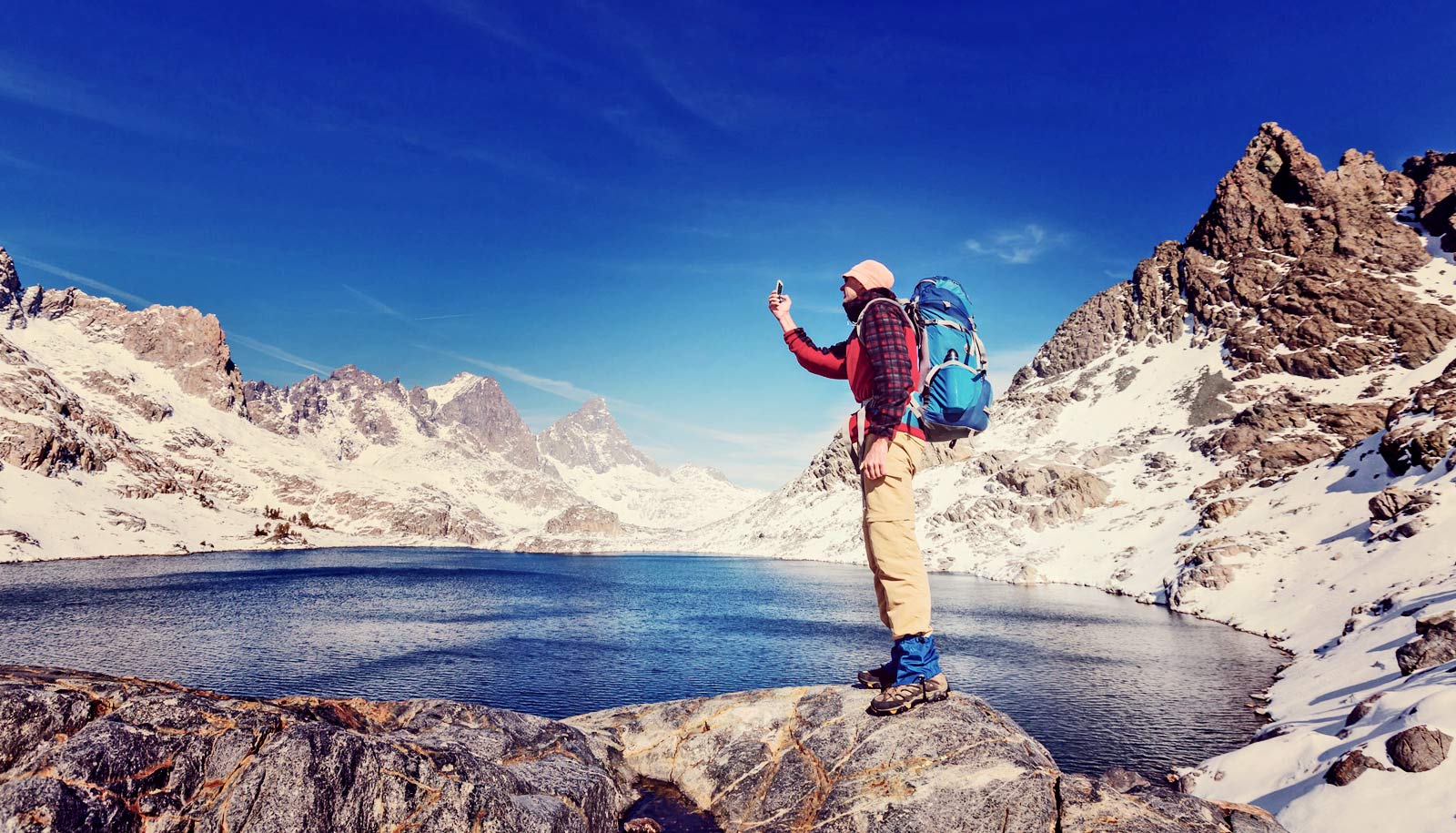A new study analyzes the likely timing of a low-to-no-snow future, what it will mean for water management, and what we can do now to stave off catastrophic consequences.
Mountain snowpacks around the world are in decline. And as the planet continues to warm, climate models forecast that snowpacks will shrink dramatically and possibly even disappear altogether on certain mountains, including in the western United States.
The review paper, published in the journal Nature Reviews Earth and Environment, analyzes previous climate projections and finds that if greenhouse gas emissions continue along the high-emissions scenario, low-to-no-snow winters will become a regular occurrence in the western US in 35 to 60 years.
The study also re-evaluates longstanding assumptions in US water management, stressing the importance of collaboration between scientists and water managers in developing and implementing climate adaptation strategies.
Changing snowpacks are critical
The Sierra Nevada, Rockies, Cascades, and other mountain ranges provide a tremendous service by capturing, storing, and releasing water for downstream use. Historically, snowmelt would slowly release water from winter precipitation well into the spring and into the summer, when precipitation is low but water demands are at their highest due to agriculture.
“This puts the loss of seasonal snowpacks throughout the Western US into perspective,” says coauthor Naomi Tague, an ecohydrology professor at the University of California, Santa Barbara.
For example, it highlights that historically in years with an “average” climate, the amount of water stored in snowpacks is more than double that in existing reservoirs. “The take-home message is that changing snowpacks are critical, and that we need to act now to adapt our water use, regulations, and infrastructure to avoid water crisis in the future.”
Increasing temperature and shifting precipitation are mostly responsible for the shrinking snowpacks. Warmer temperatures mean that storms drop more water as rain rather than snow, limiting the amount of seasonal snowpack that builds up in the winter.
The researchers started with a literature review distilling several hundred scientific studies on snow loss; of those, they identify and analyze 18 studies that had quantitative snowpack projections for the western US.
‘Extreme’ snowpack event
“A recent study highlighted that there has been a 21% decline in the April 1 snowpack water storage in the western US since the 1950s—that’s equivalent to Lake Mead’s storage capacity,” says coauthor Alan Rhoades of Lawrence Berkeley National Laboratory’s Earth & Environmental Sciences Area.
“In our review, we found that around mid-century we should expect a comparable decline in snowpack. By the end of the century, the decline could reach more than 50%, but with a larger range of uncertainty.”
Many water managers use the somewhat arbitrary date of April 1 to make snowpack observations and planning decisions. Snowpack volume has decreased over the last several decades, and the timing of peak snowpack has shifted.
The peak occurs approximately eight days earlier in the year for every 1 degree Celsius (1.8 degrees Fahrenheit) of warming. Many regions have already experienced winters with very little snow in recent years. On April 1, 2015, the Sierras snowpack was 5% of normal, which the authors call an “extreme” event.
“Low snow” is defined as when the snowpack (or more precisely, the snow water equivalent, a measure of how much water will be released when the snowpack melts) is in the 30th percentile or lower of the historical peak. The paper defines two other types of low-to-no-snow conditions. “Episodic low-to-no snow” occurs when more than half of a mountain basin experiences low-to-no snow for five consecutive years. “Persistent low-to-no snow” is when this happens for 10 consecutive years.
Under these definitions, California could experience episodic low-to-no snow as early as the late 2040s and persistent low-to-no snow in the 2060s, according to one high-resolution climate projection. Other parts of the western United States could see persistent low-to-no snow in the 2070s. The authors caution the need for more analyses with a broader set of climate projections to enhance confidence in this timeline.
The authors describe the climate projections in their study, writing: “Through the middle and end of the 21st century, an increasing fraction of the western US is impacted by snow water equivalent deficits relative to the historical period. In particular, only 8 to 14% of years are classified as low-to-no snow over 1950-2000, compared to 78 to 94% over 2050-2099. In all regions, an abrupt transition occurs in the mid-to-late 21st century.”
What will happen to water resources?
The impacts of a low-to-no-snow future extend beyond just decreased streamflow, although that is certainly a significant consequence. In the Sierra Nevada, for example, the amount of water in the snowpack on a typical April 1 is nearly double the surface reservoir storage in California.
“A low-to-no-snow future has massive implications for where and when water is stored in the western US,” says coauthor Erica Siirila-Woodburn of Lawrence Berkeley National Laboratory’s Earth & Environmental Sciences Area.
“In addition to the direct impacts on recreation and the like, there are a lot of secondary effects on natural and managed systems, from a hydrologic perspective. So that’s anything ranging from increased wildfire occurrence to changes in groundwater and surface water patterns and changes in vegetation type and density.”
Snowmelt more effectively infiltrates the subsurface than does rainfall. So more rain and less snow could significantly affect the groundwater levels in mountainous systems. Further, less snow at lower elevations will decrease the overall surface area of snowpack stored in the mountains, potentially resulting in less available snowmelt that infiltrates into the ground.
Snowpack estimates can improve
Researchers say the study’s goal was to spur a conversation about adaptation strategies. “We want society to be proactive about these changes in snowpack rather than reactive,” says Rhoades.
“Even with existing uncertainties, our estimates of snowpack and climate can be used to improve how we regulate and plan our use of water storage,” Tague says. Investing in and adopting improved water infrastructure and techniques can reduce our vulnerability in low snow years.
The paper outlines potential adaptation strategies, including a technique known as managed aquifer recharge in which excess surface water is stored as groundwater for later use. Another relatively new method is forecast-informed reservoir operations, in which weather and hydrological forecasts are used to inform decisions about retaining or releasing water from reservoirs, was recently shown to increase water storage at Lake Mendocino in California by 33%.
These and other techniques show promise for increasing water supply, but the authors also recommend more cross-collaboration, both among scientists and within society as a whole, to expand the portfolio of climate adaptation strategies.
“We are advocating for the idea of engagement with best scientific practices and more collaboration or partnership between researchers and stakeholders,” says Siirila-Woodburn. “For example, city managers are concerned with flood control; farmers are concerned with water storage; everyone has their own objectives.
“Even within science, the disciplines are typically siloed. If everyone were working together to manage water rather than working independently for their own purpose, there would be more water to go around.”
Source: UC Santa Barbara



